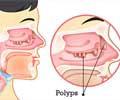Fluticasone Medication Information
Discover comprehensive details about Fluticasone, including its pronunciation, uses, dosage instructions, indications, and guidelines on how and when to take it or avoid it.
The updated prescription information covers potential side effects, precautions, warnings, and storage recommendations.
Additionally, explore the Fluticasone brands available in India and internationally, along with pricing information. For personalized advice, consult your healthcare provider.
Generic Name : Fluticasone Pronunciation : floo tik' a sone ICD Code : Y55.6 Therapeutic Classification : Anti- AsthmaticsBrand Names or Trade Names of Fluticasone
India :
Zoflut (Skin) (10 ml) |
Zoflut (Skin) (5 gm) |
Flohale RotaCaps (50mcg) |
Sylone |
Alerflo (27.5mcg/puff) |
Cuti-Bact |
Luci |
Fluticare |
Flutilab (Skin) (10 gm) |
Flohale Inhaler (50mcg/puff)
International :
Advair, Flovent
Why is Fluticasone Prescribed? (Indications)
This medication is a synthetic glucocorticoid, prescribed for preventing asthma and chronic obstructive pulmonary disease. It reduces inflammatory reactions in the airways.Topical: Topical preparation is used for certain types of skin conditions such as allergic reactions, eczema and psoriasis.
When should Fluticasone not be taken? (Contraindications)
Contraindicated in patients with severe asthma attack and hypersensitivity.What is the dosage of Fluticasone?
Asthma- Adult- Dose is based on asthma severity. The recommended dose is 1 inhalation twice daily.The maximum recommended dosage is 500/50 twice daily.
Chronic Obstructive Pulmonary Disease- The recommended dose is 1 inhalation (250/50) twice daily.
Skin Inflammation: Cream, Lotion, and Ointment- Apply as directed by your physician.
How should Fluticasone be taken?
It comes as an aerosol to inhale by mouth.It also comes as a cream, lotion and ointment to apply over the affected area.
What are the warnings and precautions for Fluticasone?
•Inhaler• Caution should be exercised in patients with history of tuberculosis, cataract, increased eye pressure, infections, kidney or liver disease, diarrhea, who are taking other medications, any allergy, children, during pregnancy and breastfeeding.
• Always keep the inhaler hand in hand.
• It may cause loss of blood electrolytes, infection, due to change from oral steroids to inhaler. If you experience with any of the above symptoms, consult with your doctor immediately.
• Patients should stay away from people who are affected by certain infections like chickenpox or measles if they have not been vaccinated.
Topical
• Do not cover the treated skin after applying this medication.
• Caution needed for pregnant and breastfeeding women.
• Wash your hands thoroughly after applying this medication.
• For external use only.
What are the side effects of Fluticasone?
InhalerMost Common- Headache, inflammation of pharynx, nosebleed, nose burning/irritation, nausea/vomiting and cough.
General- Hypersensitivity reactions including skin rash, edema of the face and tongue, itching, hives, asthma, wheezing and difficulty in breathing.
Eye and ENT- Dryness, irritation, blurred vision, increased eye pressure and cataract. Loss of sense of taste and smell, rarely, nose ulcer, sore throat, throat irritation, dryness, cough, hoarseness and voice changes.
Topical- Mild skin itching, burning, peeling, dryness, rash and irritation.
Miscellaneous- Sleeplessness, headache, blisters, blurred vision, muscle weakness and tiredness.
What are the other precautions for Fluticasone?
Avoid contact with eyes.If condition worsens, consult with your doctor.
 MEDINDIA
MEDINDIA
 Email
Email











